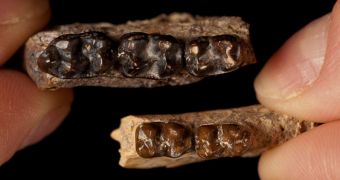The horse has a rich evolutionary history, having first appeared about 50 million years ago. Since that time, it underwent a number of significant changes, especially in terms of size. A team of researchers has just published a new investigation that sheds more light on how this happened.
When the first horse appeared, it weighed a mere 12 pounds (5.4 kilograms). Named Sifrhippus sandae, the creature was indigenous to the forests of the North American Continent. The species primarily lived during the Paleocene-Eocene Thermal Maximum (PETM).
This was a period of time characterized by an intense global warming, which saw temperatures around the world rising by as much as 10 degrees Fahrenheit. The PETM lasted for about 175,000 years, and occurred around 56 million years ago, according to data derived from the geological record.
One of the reasons why this event occurred was that a huge amount of carbon dioxide was released into the atmosphere at that time. The exact source of the greenhouse gas has not been established for certain, but it was most likely a large eruption, the melting of permafrost, or a similar scenario.
As the PETM was occurring, species were responding to the phenomenon by reducing their average body sizes. This is what happens when atmospheric CO2 concentrations increase. When oxygen amounts rise, animals tend to increase their body sizes.
The earliest horse responded by shrinking in mass from 12 to 8.5 pounds (3.85 kilograms). It retained that size for around 130,000 years, but then spent the final 45,000 years in the PETM increasing in mass, all the way to 15 pounds (6.8 kilograms).
In a new investigation, researchers were able to demonstrate that previous assumptions about the cause-and-effect relationship between temperatures and body size were indeed correct. The study was sponsored by the US National Science Foundation (NSF).
The team behind the work was led by University of Nebraska-Lincoln investigator Ross Secord and University of Florida (UF) Florida Museum of National History (FMNH) expert Jonathan Bloch.
This type of study could provide an interesting insight into how species living on Earth today might react to the global warming currently affecting our planet. Figuring this out is critical for conservation efforts aimed at threatened and endangered species.
“The reduction in available oxygen some 50 million years ago led to a reduction in the body size of animal life. What does that say about the future for Earth's animals?” NSF Division of Earth Sciences program director H. Richard Lane says.

 14 DAY TRIAL //
14 DAY TRIAL //